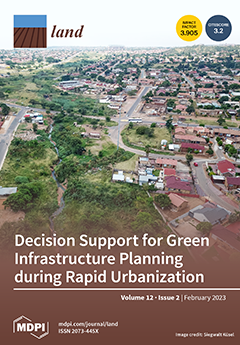Many irrigation ponds in Fukushima Prefecture were decontaminated due to the contamination of radiocesium released from Fukushima Daiichi Nuclear Power Plant. To evaluate the impact of decontamination on
137Cs dynamics in an urban pond in Koriyama City, Fukushima Prefecture, Japan, temporal changes
[...] Read more.
Many irrigation ponds in Fukushima Prefecture were decontaminated due to the contamination of radiocesium released from Fukushima Daiichi Nuclear Power Plant. To evaluate the impact of decontamination on
137Cs dynamics in an urban pond in Koriyama City, Fukushima Prefecture, Japan, temporal changes in
137Cs concentrations in bottom sediments and pond water were investigated before and after bottom-sediment removal. Post-decontamination,
137Cs inventories in bottom sediments decreased by 46–89%.
137Cs inventories in bottom sediments were relatively high in fine sediments before decontamination, and were also high at points near the water inlet after decontamination. Following decontamination, the mean
137Cs concentration in suspended solids (SS) and the mean dissolved
137Cs concentration in pond water decreased by 52% and 5%, respectively. Even after decontamination, the normalized
137Cs concentrations in SS and in water, which were calculated by dividing the
137Cs concentrations by the mean
137Cs inventories in each area, were higher than those in rivers, dam reservoirs, and ponds elsewhere in Fukushima. The positive correlations between δ
15N values, an indicator of the source contribution to bottom sediments, and
137Cs concentrations in the upper 5 cm of bottom sediments after decontamination implied that SS from urban areas gradually increased the
137Cs inventories in the pond. The results underline the importance of secondary inputs of
137Cs from highly urbanized catchments.
Full article





